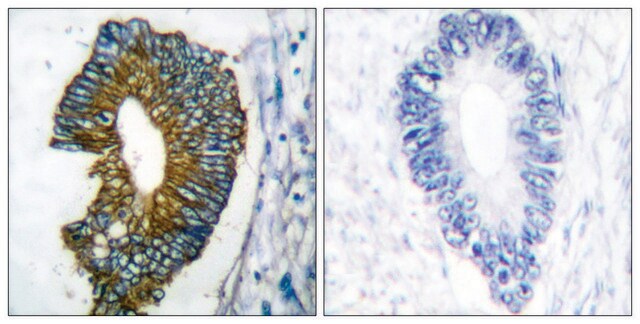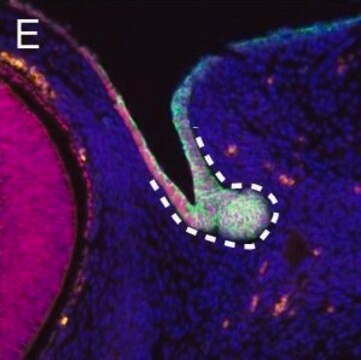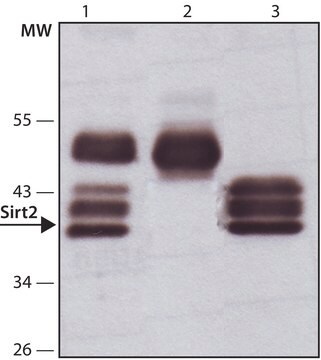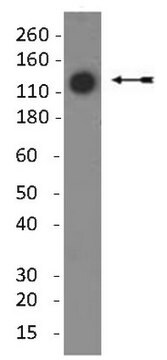ABT1383
Anti-phospho-Keratin-18 Antibody (Ser52)
from rabbit, purified by affinity chromatography
Sinónimos:
Keratin, type I cytoskeletal 18, Ser52-phosphorylated, Cell proliferation-inducing gene 46 protein, Ser52-phosphorylated, CK-18, Ser52-phosphorylated, Cytokeratin-18, Ser52-phosphorylated, K18, Ser52-phosphorylated, Keratin-18, Ser52-phosphorylated
About This Item
Productos recomendados
biological source
rabbit
Quality Level
antibody form
affinity isolated antibody
antibody product type
primary antibodies
clone
polyclonal
purified by
affinity chromatography
species reactivity
human
technique(s)
western blot: suitable
NCBI accession no.
UniProt accession no.
shipped in
ambient
target post-translational modification
phosphorylation (pSer52)
Gene Information
human ... KRT18(3875)
General description
Specificity
Immunogen
Application
Quality
Western Blotting Analysis: A 1:5,000 dilution of this antibody detected upregulated Keratin-18 Ser52 phosphorylation in 10 µg lysate from phosphatase inhibitors Calyculin A- and Okadaic acid-treated HEK293 cells.
Target description
Other Notes
¿No encuentra el producto adecuado?
Pruebe nuestro Herramienta de selección de productos.
Storage Class
12 - Non Combustible Liquids
wgk_germany
WGK 1
Certificados de análisis (COA)
Busque Certificados de análisis (COA) introduciendo el número de lote del producto. Los números de lote se encuentran en la etiqueta del producto después de las palabras «Lot» o «Batch»
¿Ya tiene este producto?
Encuentre la documentación para los productos que ha comprado recientemente en la Biblioteca de documentos.
Nuestro equipo de científicos tiene experiencia en todas las áreas de investigación: Ciencias de la vida, Ciencia de los materiales, Síntesis química, Cromatografía, Analítica y muchas otras.
Póngase en contacto con el Servicio técnico








